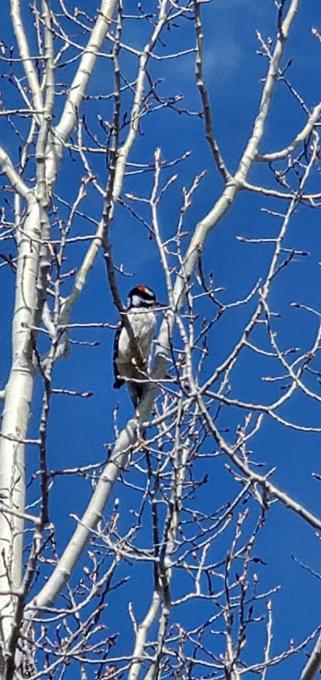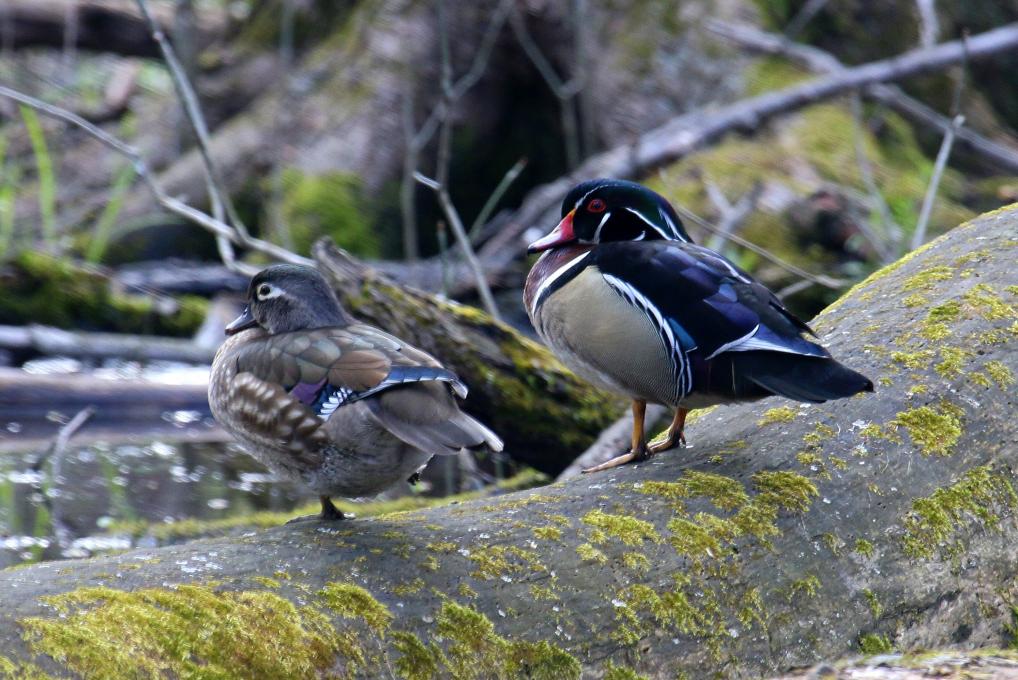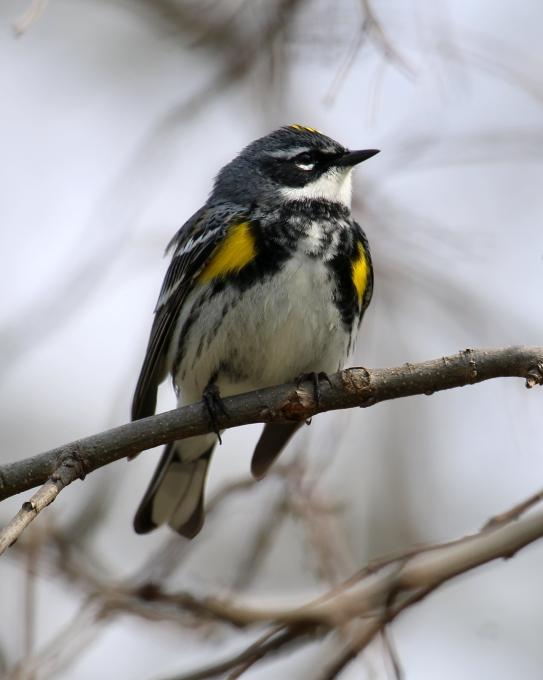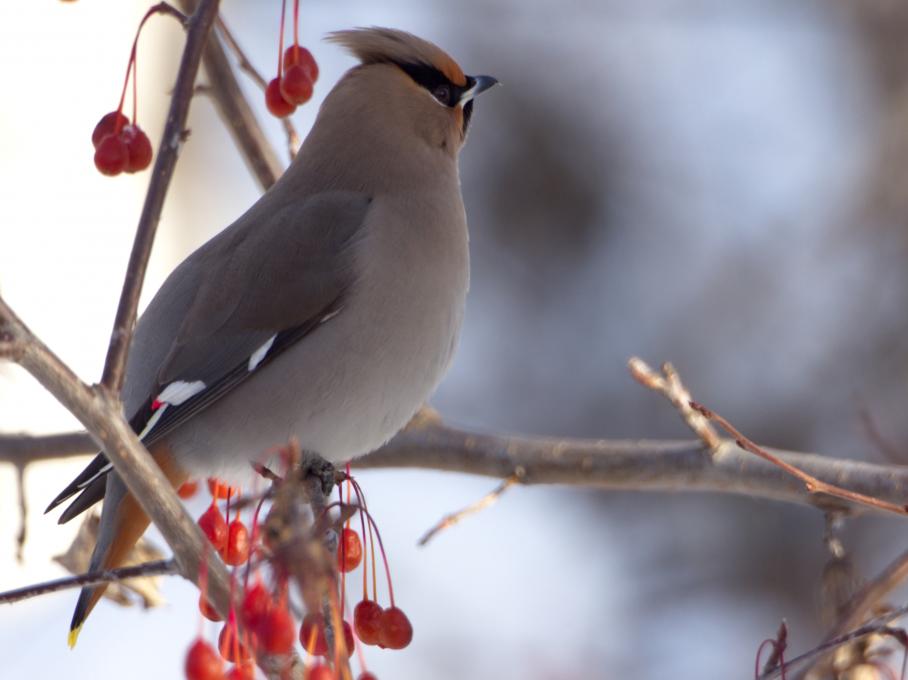The Cornell Lab Bird Academy › Discussion Groups › Joy of Birdwatching › Activities: Exploring Birds
-
I very much enjoyed the first session of this course. I have watched birds for many years, but certainly I am not well informed. This Ruffed Grouse became part of our family in Western New York 2 years ago.

-
I have a lovely path near my home that I can walk to in 7 minutes or so (I live in western Massachusetts). It is a raised path between two wetland, swampy areas so there are always birds to be heard and seen. Yesterday I saw a very small bird that I didn't recognize. It jumped along the ground and in bushes near me for quite a while, as I stood. I was able to observe the beak, which was thin and a bit long, but not curved at all. I had been thinking that maybe it was a Carolina Wren but the beak was not right for that. When I got home, I looked in my bird app and it may have been a Ruby-crowned kinglet. Maybe...
-
Molly, you summed it up right there...birdwatching has a lot of “maybe” moments! And then also some of those YES times as well. It’s very humbling (a good thing in any pursuit or passion) and keeps me looking, going to the guides and other resources (like this course). I also learn so much reading the comments which puts a people-friendly spin on this course. I’ve started taking more pictures, which is itself a challenge. First I had a craigslist used $20 Nikon digital with 18x (optical) 72x (digital) zoom which was better than 7x cell phone zoom. Got hooked and bought Nikon P900 with 83x optical zoom. Wowsa! It’s been so fun to go “bird hunting.”
-
-
1) Songbirds- what’s not to love? I live in Redlands, So Cal, near an Oak Grove, in a neighborhood with various mature trees and native chaparral hills. My days are beautified by birdsong, and I don’t know who is singing. I voted for the Carolina Wren because it represented the Wren family, but I love the sparrows and warblers, too. I appreciate that the Wall of Birds and the Merlin app have sound/song clips. On the Wall I also explored shore birds (sandpipers), seabirds (pelican), owls, raptors and the barn swallow- I almost voted for it. 2/3) Today I saw a yellow-green finch like bird, a few hummers (one is greenish, another brown and white), and a soaring swift or swallow type bird. And I heard a symphony of sweet song, as well as a distant crow and a nearby falcon. I’m a novice identifier, but a lifelong bird lover.
-
I love the songbirds. So peaceful. When i see them I often say hello cutie, or some such thing.
-
-
On the Wall of Birds - I liked the Iwii in Hawaii - it is an impressive bird with bright orange/red plumes that were prized by ancient Hawaiians. I am fascinated by the indigenous species in Hawai'i like the Iwii that are believed to have descended from the same species of birds that branched out to an amazing array of species of birds that took on very unique features of unrelated species. I also voted for the Wood Duck, such a beautiful bird. It was very windy where I live yesterday and very few birds out and about. I did see what I was sure was a raptor at a distance that I could not identify in a nearby park. Very white belly and underwings. Just before I got back to the car two of them flew overhead and landed on a light pole. Two Osprey!
-
I go to Hawaii every couple of years. A few years ago, I went on a bird walk i with Jack Jeffrey, a well-known birder specializing in endemic Hawaiian birds. I was the only novice on this hike and thank goodness for the others who could spot all the birds that I hoped to see. The i'iwi is my favorite also - and we did see it, along with many of the beautiful tiny birds that can only survive in the higher elevations now, due to non-native predators including mosquitoes.
-
-

 A male and female cardinal from my backyard in the suburbs of Minneapolis.
A male and female cardinal from my backyard in the suburbs of Minneapolis. -
I wish we had cardinals in India. They are so beautiful.
-
-
Last year I took a 10-week course where we did an overview of some 72 North American bird families. It was overwhelming, and I really liked the part of this lesson that showed smaller, informal categories (e.g. songbirds, raptors, wading birds) and subgroups of songbirds (acrobatic flyers, sparrows, etc.) Here in suburban Maryland outside Washington DC, birds I commonly see in the backyard include mourning doves, robins, Northern cardinals, a couple finches (house, or purple?), bluejays, song sparrows, and seasonal visits by juncos, redwing blackbirds, grackles, and cowbirds. Also plenty of invasive house sparrows and starlings. On our tree in the front yard we get white-breasted nuthatches and flickers. We are not close enough to a forest or meadow to get many non-feeder species, so those are the ones I'm hoping to find and learn.
-
I am a newbie to bird watching and even listen in awe of the serious bird watchers! I am in the suburbs of NYC and I have seen the following at my bird feeder: Common Grackle, Pileated Woodpecker, Black-capped chickadee, Mourning Dove, Downy Woodpecker, Northern Cardinal, and Chipping Sparrows. My yard is filled with robins and crows! Yesterday at Croton Point Park I saw my first Purple Martin! So exciting!
-
 I learned about the Wood Duck, when my son - in Brewster, MA - on Cape Cod, MA in USA rescued this female from the bottom of his chimney on Saturday after 3 days of mysterious noises. Duck was not what they imagined. I discovered that uniquely these ducks have claws, as well, for securely being in trees. This also reinforced to me the need to look at both mail and female pictures to identify a bird (you can tell I am a novice), as the make Wood Duck has a wildly colorful head. Their house is on the edge of a woods, with wetland behind and a small pond about 200 yards away. (And the men in our area seem to be cultivating very wierd mustaches during the pandemic).
I learned about the Wood Duck, when my son - in Brewster, MA - on Cape Cod, MA in USA rescued this female from the bottom of his chimney on Saturday after 3 days of mysterious noises. Duck was not what they imagined. I discovered that uniquely these ducks have claws, as well, for securely being in trees. This also reinforced to me the need to look at both mail and female pictures to identify a bird (you can tell I am a novice), as the make Wood Duck has a wildly colorful head. Their house is on the edge of a woods, with wetland behind and a small pond about 200 yards away. (And the men in our area seem to be cultivating very wierd mustaches during the pandemic). -
I saw my first Wood duck last week. So spectacular!

-
-
Hello all! Here are my activities: Activity 1 - Love the Bird Wall! The video is quite inspirational, nice to hear what the artist had to say, what an interesting career. Although extinct, I was fascinated by the Ornimegalonyx, a four foot owl. We have owls in my area, and I can only imagine what it would be like to see that. Incredible. Activity 2 - Three birds I found outside and was able to identify; 1. Junco - we love these guys. Every year they come by and nest in the hillside behind our house in Southern California. I did not know they were in the sparrow group, they are lively and fun to watch. 2. Mallard - this is an easy one, but we have a mated pair that has been roaming our neighborhood, they are suburban ducks! Lots of neighbors reporting sightings on our neighborhood app. They are much loved. 3. Red - crowned parrot. We have a large flock in the area we live in, which is the foothill area north of Los Angeles. I downloaded the Merlin app and was able to identify the species. Interesting that the only area they live in outside of Mexico is here. All kinds of stories about the exotic bird farms that were abandoned in the past, resulting in flocks of parrots establishing themselves here. There is a photo of a flock attached to this post. They thrive here. Activity 3 - Favorite bird - Allen’s Hummingbird. Also using the Merlin app was able to identify this species. We have had 8 baby hummingbirds hatch and launch from our patio over the past five years. Most recent one just flew off last weekend. This has become a favorite spring activity and this year with more time at home has brought us a lot of time to observe watching the mama build the nest, feed the baby, weather a storm, and the baby reluctantly leaving the nest. Usually they lay
 two eggs, but this one laid only one. We think junior was pretty comfortable. He took longer than usual to leave and was pretty big!
two eggs, but this one laid only one. We think junior was pretty comfortable. He took longer than usual to leave and was pretty big!


-
Scrolling through all the photo and am amazed by the variety of birds that have been submitted. Thank you for all the pictures.
-
I don’t have an image of a bird to post, but we recently moved to southern Massachusetts, and our yard appears to be the intersection of several Northern Flicker territories. From early morning to evening, we are surrounded by Northern Flickers, each of whom has an opinion to give ... repeatedly ... all day long 😂
-
It would be nice if the photos indicated where the bird is found - is it my area or somewhere far away? Hope we see more video with the prof...and less reading from the screen. Onward!
-


-
Thank you for that photo of the pileated woodpecker, Curt! I've been commenting on it regarding others' posts, and here is a photo! Very typical, I think--and, of course, very impressive. It reminds me of the walks I used to take through a very small woodland (disputed terrain between a city and a developer--and the city was still winning:), when I often saw it (and certainly heard it) every day. I guess (for today) it is my favorite bird :)
-
-
Activity 3 : Peahen , the neighborhood bird. Feathers not as beautiful as the male peacock but walks very elegantly, the kids follow her trail, she feels very comfortable when I am around and take a short flight if I make sudden move. It is big but still very gentle to other birds. Locally we believe if peahen is singing continuously that means it is about to rain.

-
How wonderful to see a peahen up close!
-
Her crown (head-dress? hairdo?) is amazing.
-
-
Activity 2 - Bird one - Group - Song birds
 Bird 2 : Red Wetted lapwing - Group - Shore bird
Bird 2 : Red Wetted lapwing - Group - Shore bird
 Bird 3 : Group - Humming Bird
Bird 3 : Group - Humming Bird
-
Namaste to All, I am Abhimanyu from India's western state Rajasthan's capital Jaipur. This is a Hot semi arid region where summer temperature go upto 45 degree Celsius and winter temperatures are recorded as low as 5 degree Celsius. I want to express my gratitude towards all those who are sharing and motivating others on this group discussion. Special thanks to the Bird Academy for this wonderful opportunity. I assure I will read as many posts I can on this discussion, I will feel privileged to do so. Activity 1 : Bird 1 : Oriental Darter (Anhinga melanogaster) also called snake bird because of the snake like neck. I clicked this picture in famous tiger reserve Ranthambore. Fun facts Diver, has to dry it's wings after every dive.
 Bird 2 : White-throated Kingfisher (Halcyon smyrnensis) I clicked this picture from my balcony. There were couple of them, I watched them from my binoculars they were looking for mice in the empty patch of land near my home. I spent 20 minutes watching them and now I can recognize the bird just from it's call which is very similar to common kite and Great Indian grey horn-bill.
Bird 2 : White-throated Kingfisher (Halcyon smyrnensis) I clicked this picture from my balcony. There were couple of them, I watched them from my binoculars they were looking for mice in the empty patch of land near my home. I spent 20 minutes watching them and now I can recognize the bird just from it's call which is very similar to common kite and Great Indian grey horn-bill.
 Bird 3 : House Sparrow ( Passer domesticus) They are like friends now in this lockdown. I started smashing some dry peanuts and serve them to birds. House sparrows and doves love this catering and are frequent visitors. I serve them food and they give me delight - Barter!
Bird 3 : House Sparrow ( Passer domesticus) They are like friends now in this lockdown. I started smashing some dry peanuts and serve them to birds. House sparrows and doves love this catering and are frequent visitors. I serve them food and they give me delight - Barter!

-
Thank you for posting your images. You caught my attention because I lived in Jaipur for some months when I was younger. Here in lockdown, we are sharing our time the house sparrows, too! Also many American goldfinches and house finches.
-
Thanks for posting photos. Fun to see birds we can only see if we travel.
-
Wonderful images, thank you
-
-
 Red Tailed hawks are easily my favourite bird. They are so majestic and fiesty. I caught a pair flying low and yelling at each other a couple of weeks ago over our yard.
Red Tailed hawks are easily my favourite bird. They are so majestic and fiesty. I caught a pair flying low and yelling at each other a couple of weeks ago over our yard. -
I am sure I have noticed their Indian cousins involved in friendly aerial fights.
-
-
Activity 1: Owls, Owls, Owls! They are my favorite simply because they always elude me! Activity 2: Chickadees are songbirds, right? They were not mentioned in the lesson. Activity 3: And again, my favorite is...Great Horned Owl. Got a picture of a mama in the next with 2 owlets a few days ago. Highlands Ranch, Colorado

-
Love those ear tufts.
-
Great photo! Love these guys
-
-

 I live in Seattle, WA. and saw this beautiful bird outside my window this afternoon. My friend (who is taking this course with me) thinks it may be Sharp-Shinned Hawk. Can anyone confirm ?
I live in Seattle, WA. and saw this beautiful bird outside my window this afternoon. My friend (who is taking this course with me) thinks it may be Sharp-Shinned Hawk. Can anyone confirm ? -
We live in Idaho and love watching and identifying birds. We love watching them come back after the winter. We have a Harry Woodpecker in our aspens that we have watched build its nest. We have Turkey Vultures that sun in the meadow. We have seen more than 20 at one time. The Spotted Towhee arrived in March. We love sleeping with our windows open and waking up to bird songs. We have our own personal sound track!



-
Hi! I'm from Columbus, Ohio and my favorite bird from the Wall of Birds is, without a doubt, the Lilac-breasted Roller because I became a birder after seeing this bird on vacation in South Africa. Before then in the trip, I was only concerned about seeing lions, leopards, rhinos, elephants, etc., but this little bird made me begin to notice the birds too and started my slow journey into birding. I have so many favorite local birds that it is difficult to pick. However, I have been getting out to Greenlawn Cemetery for the past two weekends with the other birders from total beginners to the guys arriving from two hours away and setting up camp at the pond. Since Magee's Marsh in northern Ohio is currently closed due to the pandemic, Greenlawn has become a local hangout to spot warblers. Here is a photo from last week, taken at Blacklick Metro Park, of a pair of Wood Ducks and a photo of a Yellow-rumped Warbler taken at Greenlawn Cemetery from this morning.


-
What beautiful birds, great pictures.
-
Your comment about a trip to Africa starting your "slow journey in birding" jumped out at me. I went to Botswana last year and I remember two specific birds that really got my attention. One was yours, the Lilac-breasted Roller, and the other was a Southern Carmine Bee-eater (two of which followed our vehicle at eye level, one on each side very close to us, for around 5 minutes). Of course, the larger birds -- especially the Corey Bustards, Fish Eagles and vultures were also great. As with you, I hadn't even thought about birds until that trip, and I recently started with a couple of "Beginner Birdwalks" with a local Audobon group (I'm in southern California). Of course those group birdwalks stopped shortly afterwrds due to our shutdown in mid-March, but I am now really looking forward to learning more.
-
Hi, The warbler that I used to see daily at my office premises is not as brightly colored at this one. They fight a lot :)
-
WHAT A BEAUTY...SO IMPRESSIVE.
-
Hi Danya. Great shot of the yellow-rumped warbler! Thanks to this course and the Merlin app, I spotted and identified one of these on my evening walk tonight. I'm so excited to start really noticing all the wonderful birds and finding out how many people from all over see the same ones! I'm in Saskatchewan, Canada.
-
-
One of my favorite birds is the Bohemian waxwing (Bombycilla garrulus). I really enjoy watching them forage for small fruits on trees in my yard in winter.

-
I love waxwings.
-
-
I've always been interested in birding. My father is an avid birdwatcher and I guess I got the bug from him. My brother, from western Canada, is also very into bird watching and we like to discuss the common and different birds from our regions. I live in the country with a forest/marsh property. There are so many birds around that I can identify, but many more that I cannot (many are shy and I can only hear their songs). Since having to stay home and self-isolate due to COVID-19 I've been paying a little extra attention to my backyard buddies. I finally saw one of the Pileated Woodpeckers that have been knocking and laughing around me. At night and very early mornings I've heard a Great Horned Owl and an American Woodcock. As the warm weather approaches I am anxiously awaiting to hear my good friend Whippoorwill. Happy birding everyone, stay healthy.
-
The wall of birds is very cool. Three birds I have observed here near my home are the red tailed hawk, lots of scrub jays, and the common house finches with pretty red heads. My favorite that I’ve seen today is the hooded oriole. Beautiful bright orange and black!
-
I am not new to bird watching. I have been doing it since my 4th grade teacher shared her interest and then my father joined in and built bird feeders and houses so we could watch our backyard birds together. Everywhere we have lived I have bought bird books for that area (Eastern/Western North American Birds, Eastern Africa Birds, Asia Birds). I'm taking this course because I have never studied birds in depth. I know the common ones in my area but I want to know them better. I've already learned a few new things in just this first section. Activity 1: The one I chose was the Wandering Albatross. This species fascinates me from their length of time spent in flight to secreting salt from their eyes. It is truly amazing Activity 2: Three birds that I love to watch in my area and want to learn more about are the Great Blue Heron which fishes in my pond. They are in the Long Legged Waders group. The Indigo Bunting which frequents my bird feeder and darts in and out of the bushes. They are in the Songbird Perching group. The third one is the Red Bellied Woodpecker which has been pecking at my dead apple tree for insects. They are in the Woodpecker group. Activity 3: I have so many favorite birds but the one right now is the Chickadee. Photo from the Cornell All About Birds. I have a pair building a nest in the pipe of a wagon wheel in our front yard. I love listening to them and I need to verify whether it is Carolina or Black-Capped. I just read that I can determine that best by their song so tomorrow that will be my assignment. BTW I live in Kentucky.

-
Nice photo of the black-capped chickadee. I really enjoy watching them at my feeders, especially in winter where I live in Alaska. I've been trying to get some good photos, but I find them hard to capture in camera because they are small and they seldom sit still. But it is fun trying
-
Read More:
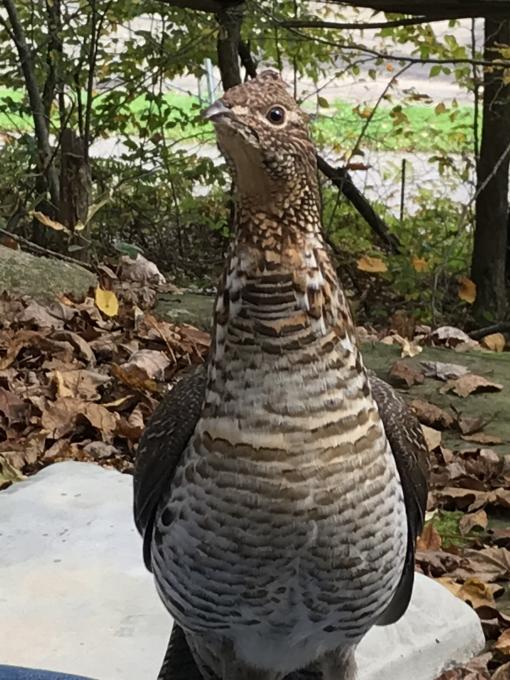

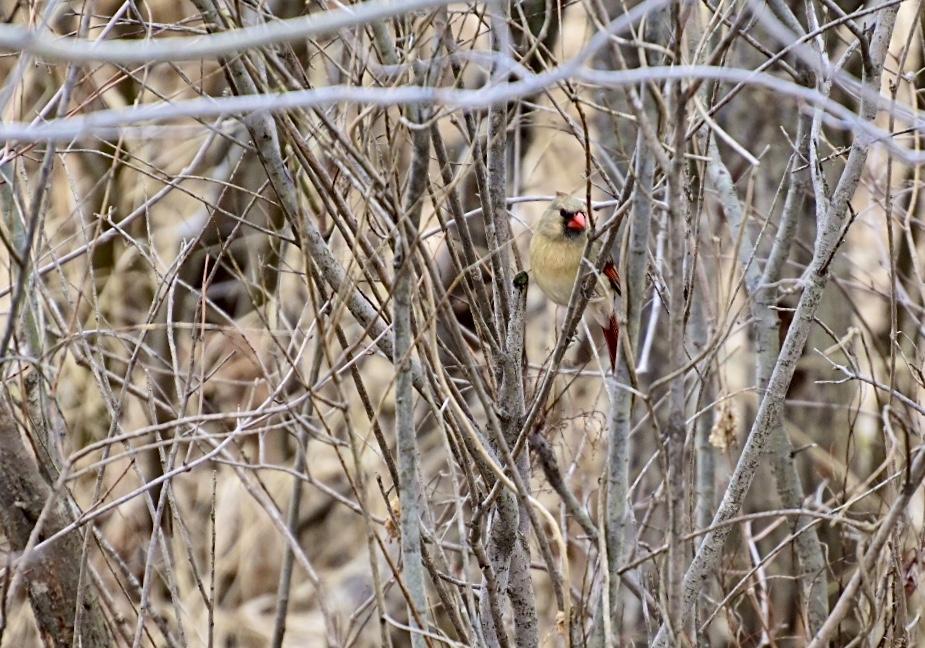 A male and female cardinal from my backyard in the suburbs of Minneapolis.
A male and female cardinal from my backyard in the suburbs of Minneapolis. 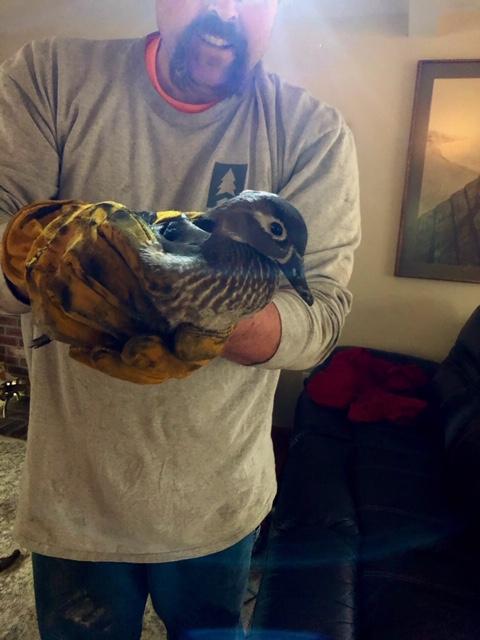 I learned about the Wood Duck, when my son - in Brewster, MA - on Cape Cod, MA in USA rescued this female from the bottom of his chimney on Saturday after 3 days of mysterious noises. Duck was not what they imagined. I discovered that uniquely these ducks have claws, as well, for securely being in trees. This also reinforced to me the need to look at both mail and female pictures to identify a bird (you can tell I am a novice), as the make Wood Duck has a wildly colorful head. Their house is on the edge of a woods, with wetland behind and a small pond about 200 yards away. (And the men in our area seem to be cultivating very wierd mustaches during the pandemic).
I learned about the Wood Duck, when my son - in Brewster, MA - on Cape Cod, MA in USA rescued this female from the bottom of his chimney on Saturday after 3 days of mysterious noises. Duck was not what they imagined. I discovered that uniquely these ducks have claws, as well, for securely being in trees. This also reinforced to me the need to look at both mail and female pictures to identify a bird (you can tell I am a novice), as the make Wood Duck has a wildly colorful head. Their house is on the edge of a woods, with wetland behind and a small pond about 200 yards away. (And the men in our area seem to be cultivating very wierd mustaches during the pandemic). 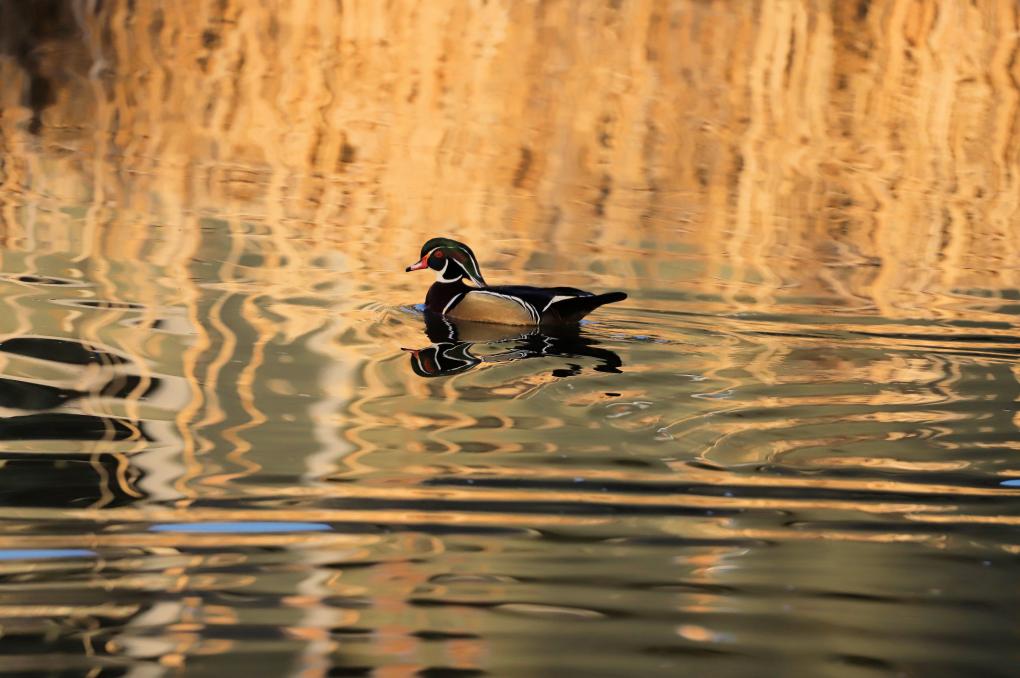
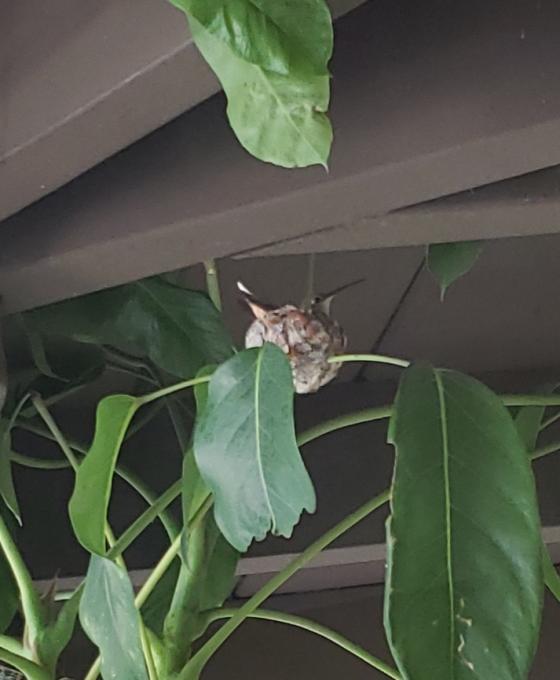 two eggs, but this one laid only one. We think junior was pretty comfortable. He took longer than usual to leave and was pretty big!
two eggs, but this one laid only one. We think junior was pretty comfortable. He took longer than usual to leave and was pretty big!
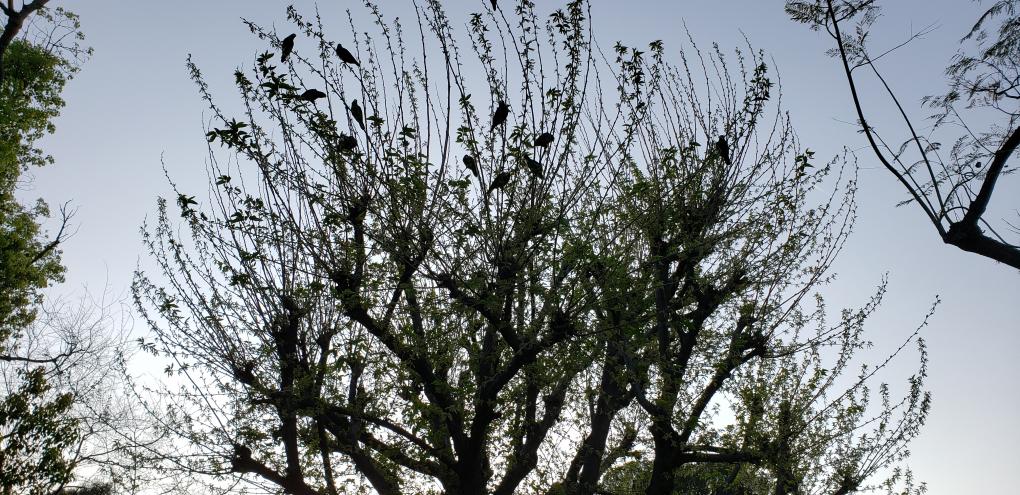
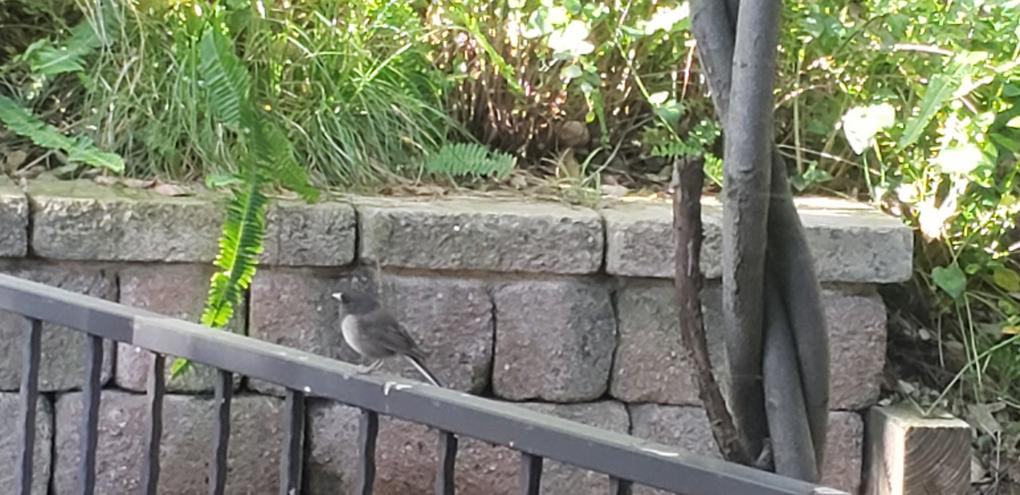

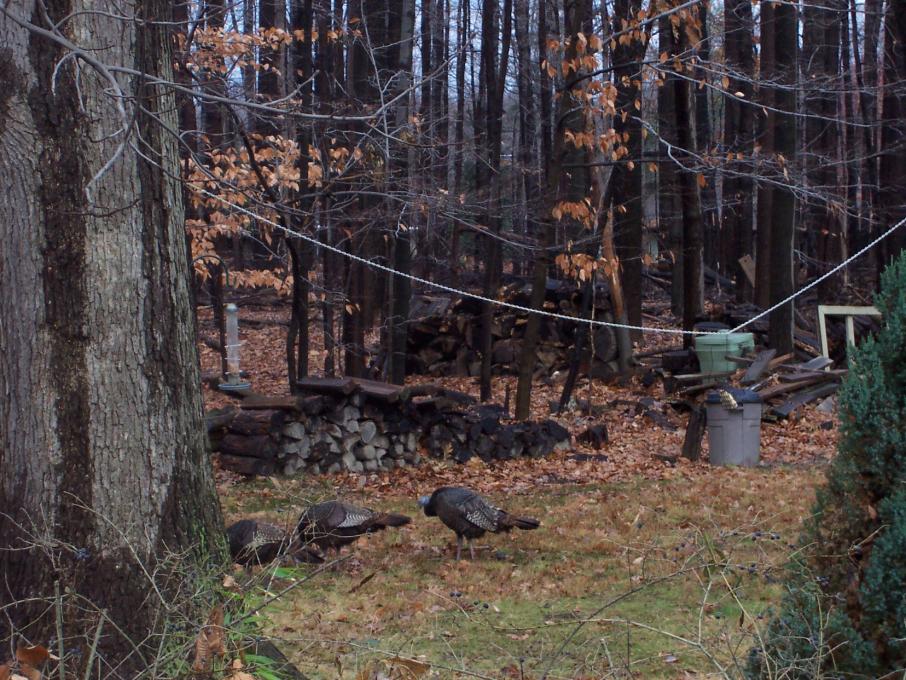
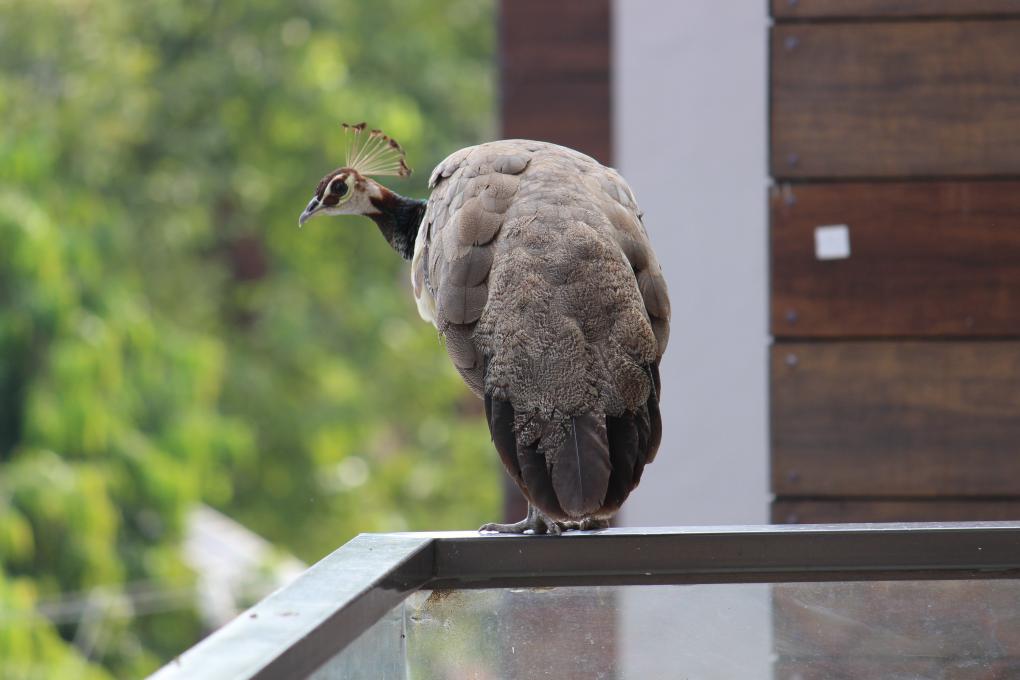
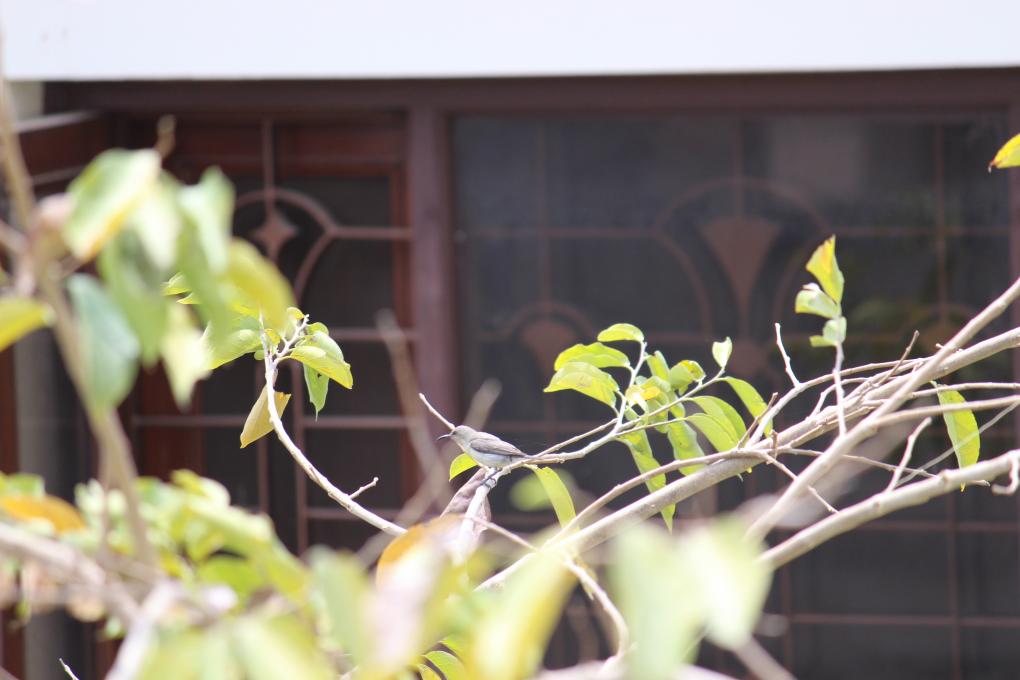 Bird 2 : Red Wetted lapwing - Group - Shore bird
Bird 2 : Red Wetted lapwing - Group - Shore bird
 Bird 3 : Group - Humming Bird
Bird 3 : Group - Humming Bird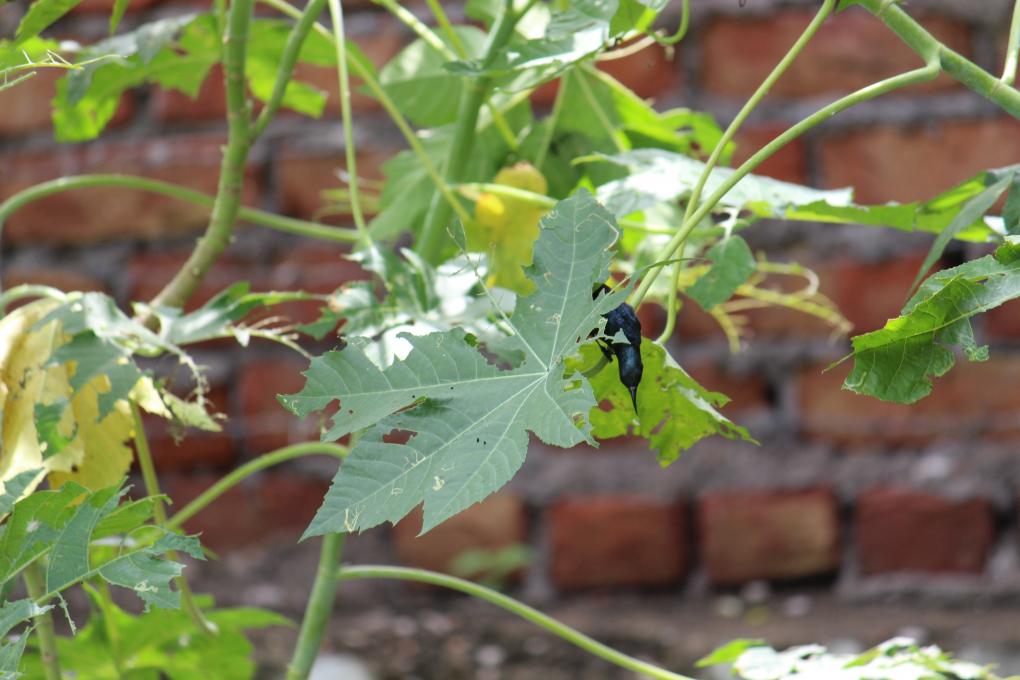
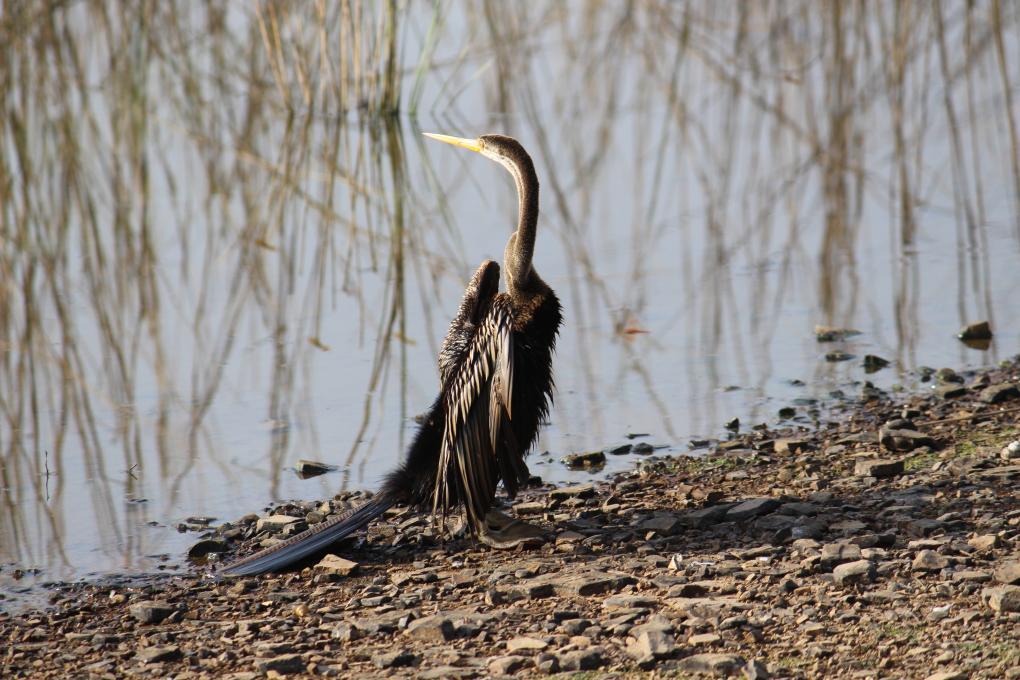 Bird 2 : White-throated Kingfisher (Halcyon smyrnensis) I clicked this picture from my balcony. There were couple of them, I watched them from my binoculars they were looking for mice in the empty patch of land near my home. I spent 20 minutes watching them and now I can recognize the bird just from it's call which is very similar to common kite and Great Indian grey horn-bill.
Bird 2 : White-throated Kingfisher (Halcyon smyrnensis) I clicked this picture from my balcony. There were couple of them, I watched them from my binoculars they were looking for mice in the empty patch of land near my home. I spent 20 minutes watching them and now I can recognize the bird just from it's call which is very similar to common kite and Great Indian grey horn-bill.
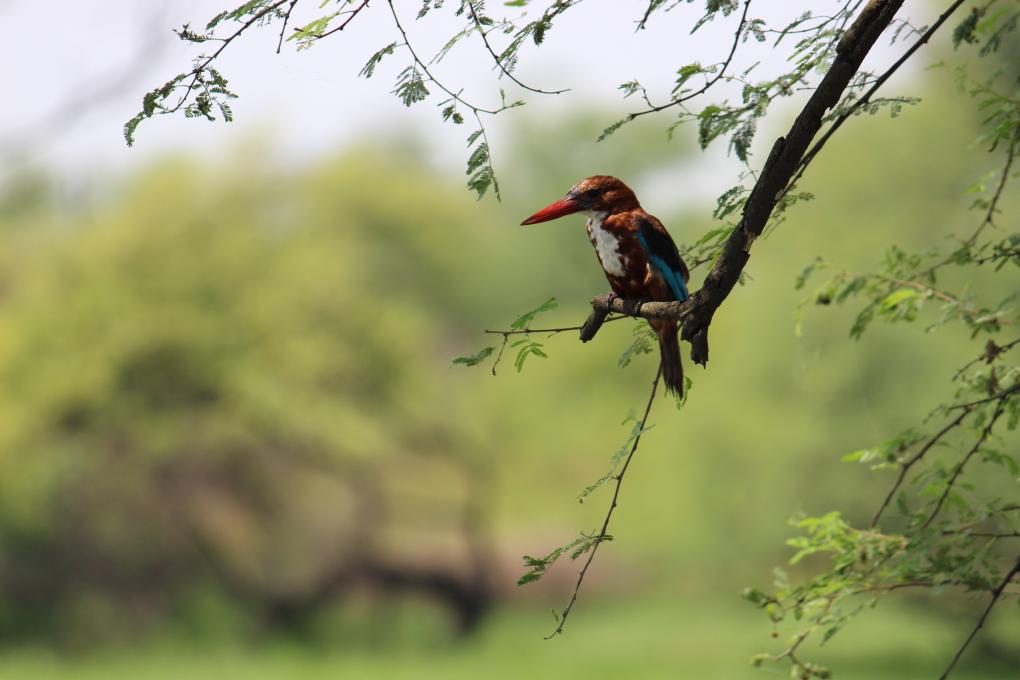 Bird 3 : House Sparrow ( Passer domesticus) They are like friends now in this lockdown. I started smashing some dry peanuts and serve them to birds. House sparrows and doves love this catering and are frequent visitors. I serve them food and they give me delight - Barter!
Bird 3 : House Sparrow ( Passer domesticus) They are like friends now in this lockdown. I started smashing some dry peanuts and serve them to birds. House sparrows and doves love this catering and are frequent visitors. I serve them food and they give me delight - Barter!
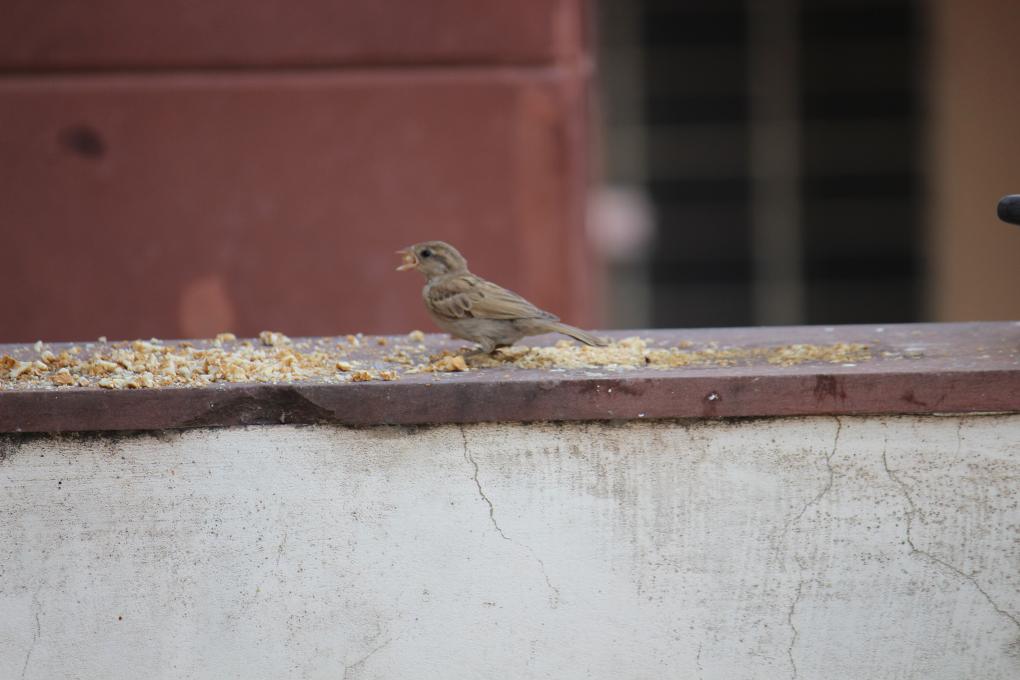
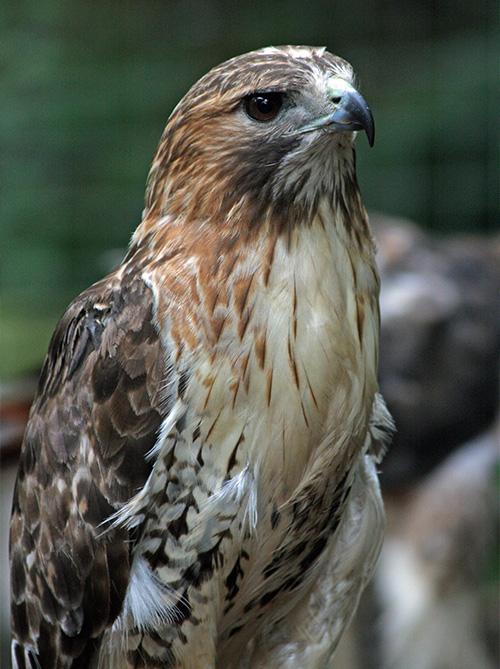 Red Tailed hawks are easily my favourite bird. They are so majestic and fiesty. I caught a pair flying low and yelling at each other a couple of weeks ago over our yard.
Red Tailed hawks are easily my favourite bird. They are so majestic and fiesty. I caught a pair flying low and yelling at each other a couple of weeks ago over our yard. 

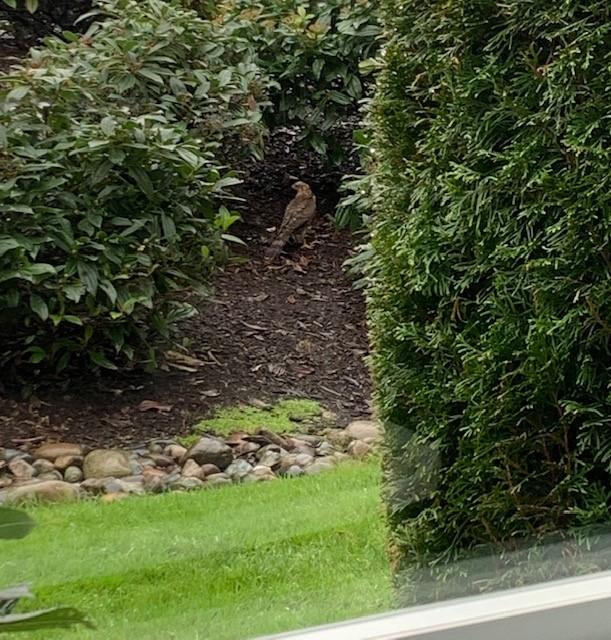 I live in Seattle, WA. and saw this beautiful bird outside my window this afternoon. My friend (who is taking this course with me) thinks it may be Sharp-Shinned Hawk. Can anyone confirm ?
I live in Seattle, WA. and saw this beautiful bird outside my window this afternoon. My friend (who is taking this course with me) thinks it may be Sharp-Shinned Hawk. Can anyone confirm ? 